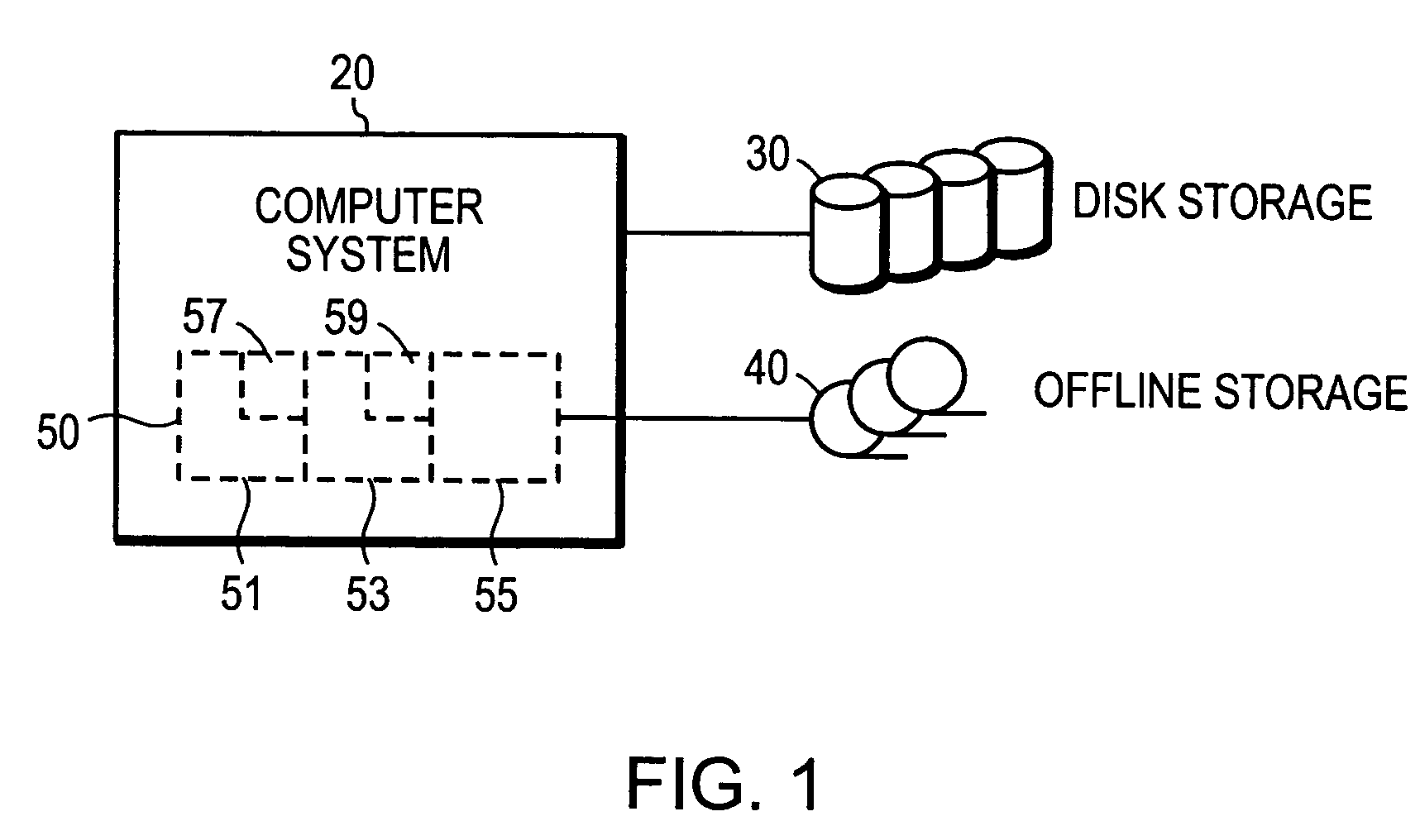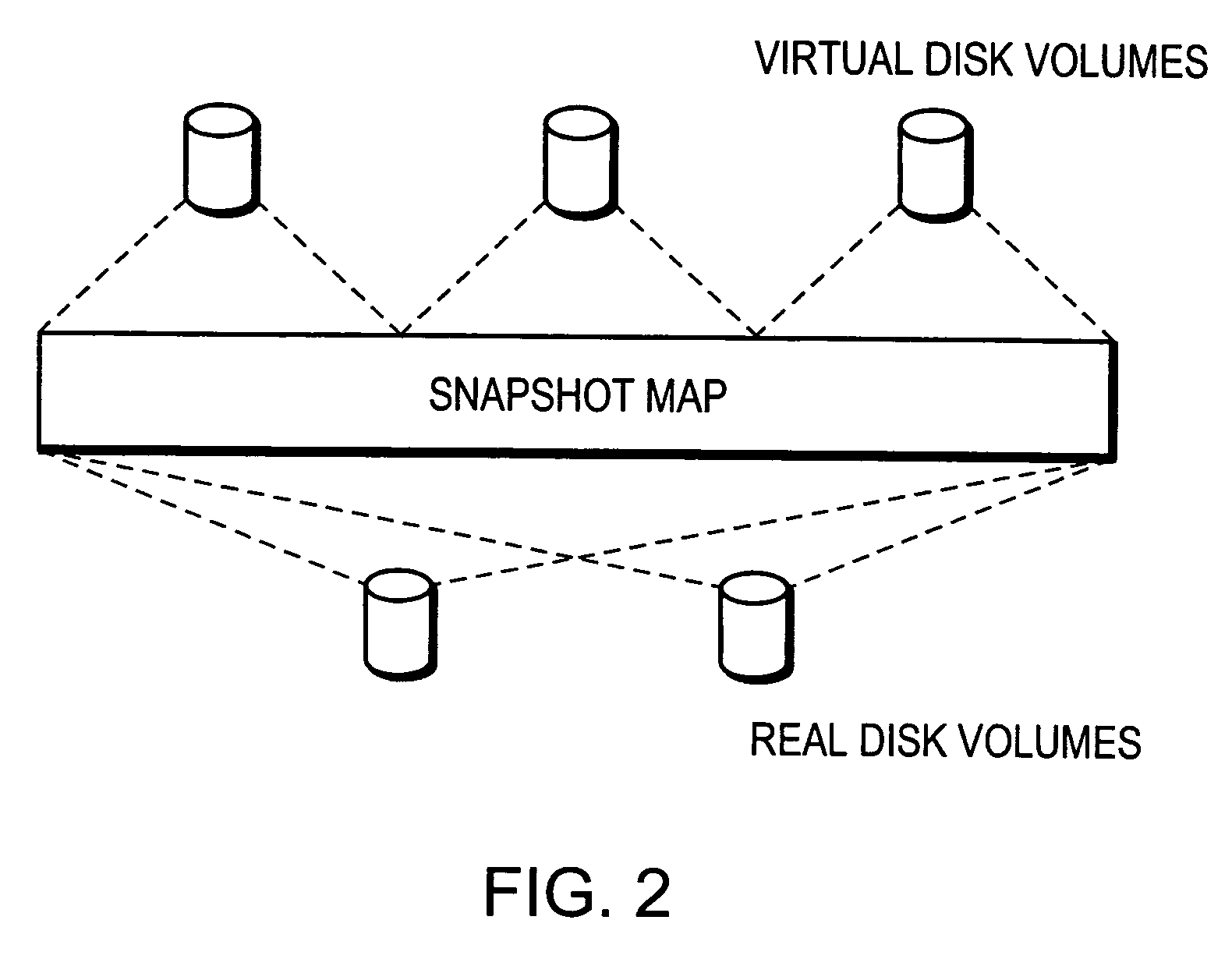Physical incremental backup using snapshots
a snapshot and physical incremental technology, applied in the field of computer data protection, can solve the problems of time vs. volume dilemma, the rate at which data can be transferred into and out and the bandwidth of the storage subsystem
- Summary
- Abstract
- Description
- Claims
- Application Information
AI Technical Summary
Problems solved by technology
Method used
Image
Examples
Embodiment Construction
[0025]FIG. 1 is a diagrammatical illustration of an apparatus for protecting the data volume in a computer system 20, in accordance with the present invention. The computer system 20 accesses and stores the data volume in a disk storage 30. The computer system 20 includes backup processing means 50 for creating backups of portions of the disk storage 30. Backup processing means 50 includes a snapshot section 51 for acquiring snapshots 57 of the consistent states of the data volume in disk storage 30, as explained in greater detail below. The snapshots 57 are compared by a processing unit 53, as explained in greater detail below, to produce a list of blocks that have changed between the snapshots 57 so that those blocks may be copied into backups 59. In a preferred embodiment, backup processing means 50 also includes a sending unit 55 for storing the backups 59 in the offline storage 40.
[0026]Referring to FIG. 2, a snapshot is a virtual copy of a disk volume. The snapshot appears to ...
PUM
 Login to View More
Login to View More Abstract
Description
Claims
Application Information
 Login to View More
Login to View More - R&D
- Intellectual Property
- Life Sciences
- Materials
- Tech Scout
- Unparalleled Data Quality
- Higher Quality Content
- 60% Fewer Hallucinations
Browse by: Latest US Patents, China's latest patents, Technical Efficacy Thesaurus, Application Domain, Technology Topic, Popular Technical Reports.
© 2025 PatSnap. All rights reserved.Legal|Privacy policy|Modern Slavery Act Transparency Statement|Sitemap|About US| Contact US: help@patsnap.com



